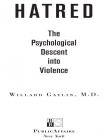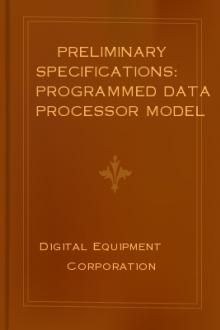Hatred, Willard Gaylin [best ebook for manga txt] 📗

- Author: Willard Gaylin
Book online «Hatred, Willard Gaylin [best ebook for manga txt] 📗». Author Willard Gaylin
The paranoid personality shares all the elements we will observe in the paranoid psychotic, while still holding onto a modicum of reality, that is, without shattering his hold on a plausible world. There have been many terms coined to characterize the paranoid character, but they all tend to include the following personality traits:
Negativism. Paranoids display a negativism that underlies their view of life and colors their expectations. This is an extension of the “just my luck” assumptions previously described. Since attitudes influence judgments and expectations influence outcomes, the “unluckiness” of the paranoid becomes a self-fulfilling prophecy.
Suspicion. Paranoids are universally suspicious and wary. Since nothing good is ever expected, nothing new can be anticipated with joy or hope. Every unopened door leads to danger or disaster; every messenger comes bearing bad news; every stranger is a potential harm doer. The unknown is always a harbinger for, and an extension of, the paranoid’s familiar and expected feelings of deprivation. Hopelessness, being trapped in an unrewarding environment, facilitates acts of desperation. The abandonment of a life of frustration and humiliation is by definition less irrational than leaving one of hope and opportunity. If, in addition, there is a certitude—an assurance by those who know—that death is not a terminus, void, or end, but a portal to a new and better life, even a reasonably rational person may elect to become a suicide bomber.
Chronic Anger. Chronic anger becomes a way of life with paranoids. The anger is not always expressed but can remain dormant, awaiting an opportunity for excessive and often explosive expression. Rage, even misguided rage, is an empowering emotion, particularly when it is used as a substitute for fear, guilt, or shame. When rage is sustained over time, and when it is attached to an enemy who has been designated as the cause of their misery, paranoids enter the realm of hatred.
Self-Referentiality. All paranoid personalities are extraordinarily self-referential, like their more seriously damaged counterparts, true paranoiacs. Group inconveniences or misfortunes are always dismissed. Paranoiacs insistently focus their attention on their own misfortune. Beyond seeing unfortunate events as happening only to them, they see those events as happening because of them. A paranoid is enraged that his plane is always late, never mind that everyone’s plane is always late. The storms that disrupt his travel plans are designed to deprive him. Even when there is no tangible person to blame, simply the winds and the rain, a metaphoric unnamed agent will be inferred.
Narcissism. A paranoid is the quintessential narcissist. It isn’t that it always rains on his parade—an indication of his bad luck. Rather, it is that it rains because of his parade. This suggests that he feels—even without the formulation of a delusion—that he has been selected for misery by some unnamed and invisible forces.
At its extreme, these perceptions are referred to in psychiatry as “ideas of reference.” The term is used in relation to a set of symptoms that are halfway to delusions. While not yet hearing voices, the paranoid with ideas of reference has the uncomfortable sense that people are looking at him, noticing him, or even closer to delusion, whispering about him. This explains the care with which New Yorkers avoid eye contact in close public spaces such as subways. “Whad’ya looking at?” from a paranoid stranger can be a prelude to an assault. In this context, looking is never interpreted as a glance of admiration, since the paranoid sees nothing in himself that others would admire. The paranoid personality’s perspective always subsumes there is purpose and intent in all events, large or small, and the plan is always designed to deprive him, not just of goods, but of respect and love.
Paranoid Shift or “Projection.” Finally—and most crucial—a paranoid shift always occurs in paranoid thinking. I use this term as an alternative to the more ambiguous word “projection,” which is the hallmark of paranoia. Projection is the process of attributing one’s own impulses, feelings, or desires to others. The classic example is in Freud’s attributing sexual jealousy to a projection of the jealous person’s own desire to philander. Modern abnormal psychology places greater emphasis on the self, interpersonal relations, and adaptation than on instinct and impulse. In this frame of reference, it is more useful to see the paranoid mechanism in broader terms. It is not just our unconscious desire that we shift or project. It is the total responsibility for our failed existence that is transferred. In the process, rage supplants guilt.
The result of a paranoid shift is almost inevitably a conspiratorial view of life. “It”—whatever disaster or disgrace that stands for—didn’t just happen, it was done to him. The paranoid always feels he is the victim of someone’s machinations. He is denied promotion because he is old, obese, black, a Jew, not because he is less competent. The readiness to accept conspiracy theories in the modern American culture is a testament to the rising insecurity in our society.
Conjuring up a conspiracy is an alternative to being forced to accept the fragility of existence. It can extend, beyond paranoia, to relatively normal segments of the population. It relieves them of facing the randomness and chanciness of their own existence. It is too much to accept that something as precious as life can hang by a thread in the hands of a disinterested fate. Someone must be to blame for the tragedies that fill the evening newscasts. Accidental tragic events that arbitrarily choose one and spare another must be a product of some design or purpose. The randomness of life is a burden too great for





Comments (0)